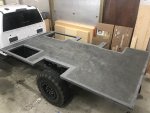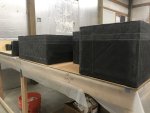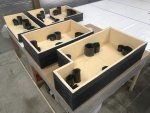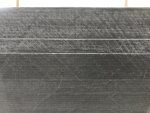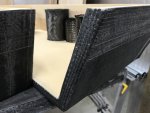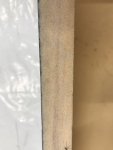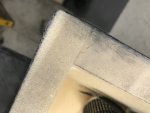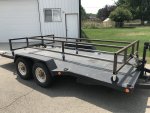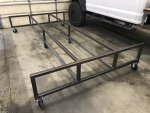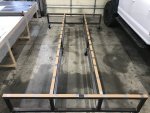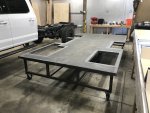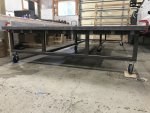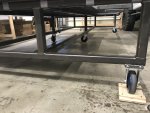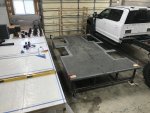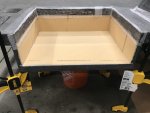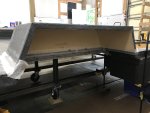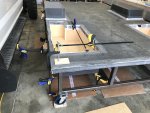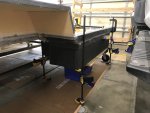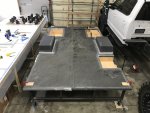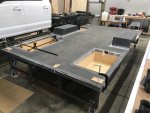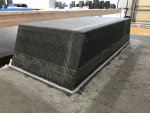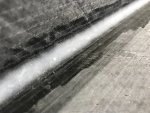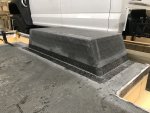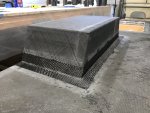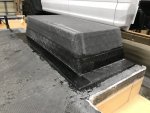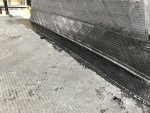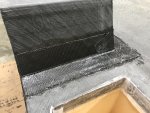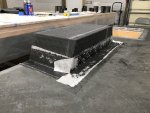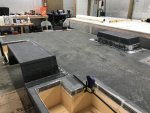Humanness Check In:
Hi All,
Sorry that it has been a month since I have posted to the thread. I’m going to start off with a humanness check in as August was a bit of an emotional roller coaster ???. You might say August represented LIFE, aspects of life that happen whether you like it or not and events that are not always within your control.
In early August I lost a family member. It was unexpected and he was much too young to be leaving this world. He had well over half of his life left to live. This obviously hit me and my immediate family pretty hard. I had to travel for the services and I also spent some additional time out of town with family members.
Shortly after this loss there was a wedding for an immediate family member of mine. Although this was a time to celebrate and be joyful, it was a bit of an emotional polarization considering it was shortly after the loss within the family. And for some of us, visiting family is not always a positive thing. I also had to spend several days traveling for the wedding as well.
Lastly, the court proceedings for a lawsuit I am involved in (I’m trying to collect money that someone owes me) began in late August. Luckily, I am the plaintiff in the matter, but going to court is never easy and the other person/defendant is being difficult and has strung this case out for almost a year now. Why can’t people just play nice ??
These events have taken a mental and emotional toll on me, as well as taken quite a bit of time away from the build. I lost about 10 days on the build in August. After coming back from some of these events, it was hard to get motivated on the build, or work long days at the shop,
Some of you might be thinking I’m sharing too much personal information, or why is this information important to the build thread? Let me explain!
Considering: it took two months longer than expected to find a shop to start the build, I originally was not planning on having to design/build the subframe or habitat box, I haven’t had as much active help on the build as I was planning on and LIFE happens, I am way behind in the build schedule. I’ve tried to compensate for this by working harder and longer-seven days a week, 10-12 hours minimum per day and I often work even longer 14-16 hours.
I know projects naturally cost more money and take more time than you expect, but some of the events noted above (within and outside of the build process) have turned weeks into months of being behind in the schedule. It’s just a hard pill to swallow when so many things are unfolding that are, to an extent, out of my control and not what I had planned or would want to happen. Also, working seven days a week has me mentally, emotionally and physically drained at times and sometimes even on edge . It then doesn’t take much, like the loss of a family member and/or a stressful lawsuit, to exhaust me.
Being at the point in the build process that I am currently at probably also doesn’t make matters any easier. I believe fiberglass and carbon fiber may just be the most labor-intensive and time-consuming construction method out there-and I'm not just talking about the overlanding industry. You can’t really rush CF; it just takes the amount of time it takes and it unfortunately takes a lot of time. Slow and Steady. I’m also pretty much working solo on the build and these are big CF layups, so it is a mountain of work. The amount of prep time needed never ceases to amaze me. I'm probably going to try and hire someone part-time or full-time to lend me a hand and get the build somewhat back on schedule.
There were even a few days when some difficult aspect of everything noted above happened on the same day, including multiple vendors screwing something up related to the build. This put me in a bit of a tail spin, an exhausted, depleted and simply beat down state. I even questioned for a moment, "Is this build just too much given where I'm at in my life and what is currently happening in my life?" It all passed pretty quickly, but it was there and it was a hard spot to be in.
Maybe I don't need to say this, but i'm going to. Please know that my humanness check ins are not about complaining or just being negative. I think many people, myself included, go into a build with high hopes and aspirations of how great it will be to have an overlander/expedition vehicle ?. We are primarily thinking about all of the cool trips and beautiful places we can visit, the dreams we can experience while in comfort ???! The amount of money, time, energy and even sacrifice needed can sometimes be lost in the initial excitement of everything. Having someone else build your rig is one thing, but building it yourself is a whole other world. There is the material construction process of the build itself and then there is the behind the scenes mental, emotional, physiological, relational, financial, temporal and even sacrificial process of the build. It is this latter process that I'm calling the humanness side of the build. This is the other part of the build process that is not often explicitly talked about. I'm just shedding light on this other part of the build process and trying to depict it as well as I can along the way.
Hopefully my humanness check ins will normalize and validate what others have/or may experience during their build-when a fun idea and hobby can easily turn into work and even a grind.
Switching gears slightly ?!
I have actually found some sick and twisted comfort ? in watching a YouTube channel by an Aussie who is building a catamaran out of fiberglass
https://www.youtube.com/c/LifeOnTheHulls/videos. The sick and twisted comfort is that he is exhausted at times too and this stuff takes consistent and persistent hard work. His detailed and in-depth depiction of the process really shows how long glassing projects can take. This guy has been on this project for years. He’s an animal and my hat goes off to him. When I’m doing a solo 5-7 hour CF layup after already having worked for 6-8 hours the same day prepping everything, I think of his build and how long he has been at it. Watching his build channel after a long solo slog of a week of non stop CF work can also normalizes things for me. Wherever I can find validation and inspiration, I’ll take it. Keep at that damn catamaran Ross, YOU DA MAN!!!!

